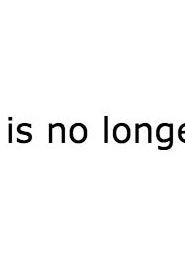The recent Toast article "Literary Trysts It Gives Me Great Joy to Think About: Oscar Wilde and Walt Whitman" set off a flurry of Facebook shares and likes and a tempest of tweets and retweets. The idea of these two gay literary icons getting together truly was too delicious not to think about.
But Oscar and Uncle Walt were not the only gay writers — past and present — known for their activity between the sheets as well as between the covers. From various biographies, diaries, and memoirs, we know about poet Edna St. Vincent Millay's intoxicating effect on her fellow female students at Vassar, author Michel Foucault's penchant for S&M clubs, City of Night author John Rechy's past as a hustling muscle daddy, and the dirt Edmund White dishes on himself in My Lives and City Boy.
Here are some of the gay past's greatest writer-to-writer hookups — and a couple of Missed Connections.
1. Nathaniel Hawthorne and Herman Melville


The 46-year-old Hawthorne met the 31-year-old Melville for the first time in Stockbridge, Mass., at a picnic in August 1850. A sudden thunderstorm forced everyone inside, giving the pair a chance to become better acquainted. Two days later Hawthorne wrote to a friend, "I liked Melville so much that I have asked him to spend a few days with me." This would be the first of a series of visits and letters, which continued until the gradual cooling off of their friendship late in 1852.
Over the top as always, in his 1850 review of Hawthorne's story collection Mosses from an Old Manse, Melville wrote, "…already I feel that this Hawthorne has dropped germinous seeds into my soul. He expands and deepens down, the more I contemplate him; and further and further, shoots his strong New England roots in the hot soil of my Southern soul."
Even more "seeds" were shot into Melville after the publication of Moby-Dick in 1851 — which was dedicated "To Nathaniel Hawthorne: In token of my admiration for his genius." Hawthorne's letter to Melville about the novel has been lost, but Melville's answer speaks of the effect the letter had on him:
"I felt pantheist then — your heart beat in my ribs and mine in yours, and both in God's. ... Whence come you, Hawthorne? By what right do you drink from my flagon of life? And when I put it to my lips — lo, they are yours and not mine. ... Hence this infinite fraternity of feeling. ... Ah! It's a long stage, and no inn in sight, and night coming, and the body cold. But with you for a passenger, I am content and can be happy..."
Can we assume that where there are "germanous seeds," shooting roots, beating hearts, and lips, there may also have been fire as well?
2. Samuel Steward and Lord Alfred Douglas


Thanks to Justin Spring's award-winning biography Secret Historian, we now know that in addition to being a professor, novelist, pioneering tattoo artist, and author of high-octane porn under the pseudonym Phil Andros, Samuel Steward was also a voracious sexual being. He kept a lifelong tally and voluminous notes on his activities, recording thousands of encounters with men (including for and with Dr. Alfred Kinsey — talk about doing it for science!).
On his first trip to Europe in 1937, Steward made a point of sleeping with Lord Alfred Douglas so that "through physical contact with Douglas he might establish physical contact, by extension, with his great literary hero Oscar Wilde." The encounter itself was less than thrilling to the twentysomething Steward:
"Lord Alfred was by then sixty-seven, and in anyone's book that's old. To go to bed with him was hardly the most attractive prospect in the world — it was terrifying, even repulsive. But if I wanted to link myself to Oscar Wilde… there was no other way."
Douglas had also become a Catholic and had given up his "homosexual leanings and entanglements...sins of the flesh were obnoxious and uninteresting." Within an hour and a half after opening a bottle of gin, however:
"We were in bed, the Church renounced, conscience vanquished, inhibitions overcome, revulsion conquered, pledges and vows and British laws all forgotten. Head down, my lips where Oscar's had been, I knew that I had won. ... After I finished my ministrations and settled back, his hand stole down to clamp itself around me. It began to move gently. ... 'You really needn't have gone to all that trouble, since this is almost all Oscar and I ever did with each other … We used to get boys for each other … We kissed a lot, but not much more.'"
3. Samuel Steward and Thornton Wilder

Also while he was in Europe, Steward met the deeply closeted Thornton Wilder. Between working on the play that would ultimately become Our Town, Wilder tutored the young Steward in how to "reconcile himself" to being gay:
"After this worldly intellectual preparation, sort of like tenderizing a tough cube steak, we climbed into bed together, myself half-drunk as I had to be in those days to have an encounter. Thornton went about sex almost as if he were looking the other way, doing something else, and nothing happened that could be prosecuted anywhere, unless frottage can be called a crime. There was never any kissing. On top of me, and after ninety seconds and a dozen strokes against my belly, he ejaculated. At this he sprang from our bed of roses and exclaimed in his rapid way: 'Didntyoucome? Didntyoucome'? No, I didn't."
In spite of this less-than-glowing review, he and Wilder did it again and again and again — according to Steward's detailed files, at least 25 more times!
4. Federico García Lorca and Salvador Dalí


Although Dalí later denied anything physical actually happened between himself and Spain's greatest poet, something was going on between him and Federico García Lorca.
They met in 1923 when Dalí arrived in Madrid to study at the Academy of San Fernando's Special School of Drawing and was "captivated by Lorca." The relationship grew as their admiration for each other and their influence over each other's work intensified. Lorca's 1925 "Ode to Salvador Dalí" captured his deep feelings for the artist. Dali's obsession had him creating paintings where he layered Lorca's features over his own or placed one man's face in the other's shadow. Lorca's head floats in Dalí's paintings from that time, as in "Little Ashes," source of the title of the 2008 film about their relationship starring Robert Pattinson as Dalí and Javier Beltrán as Lorca.
Lorca stayed with Dalí's family in the coastal village of Cadaqués, walking through town, laughing with Dalí's sister Ana María, wandering the beach, and watching each other work. By 1928, however, they were both personally and artistically estranged from each other, moving in two different directions, only to meet briefly once more in 1935.
While there is little information about what caused the separation, it most likely had to do with their fear and discomfort around the feelings for each other they both struggled with. Both were troubled by their obsession with the other. In typically over-the-top language, Dalí, who married in 1934, denied their relationship ever became physical and blamed the rift on Lorca making a pass at him.
"He was homosexual, as everyone knows, and madly in love with me," he said, according to Alain Bosquet's 1969 Conversations with Dalí. "He tried to screw me twice... I was extremely annoyed, because I wasn't homosexual, and I wasn't interested in giving in. Besides, it hurts. So nothing came of it. But I felt awfully flattered vis-à-vis the prestige. Deep down I felt that he was a great poet and that I owe him a tiny bit of the Divine Dalí's asshole."
Some who knew the artist think he was exaggerating the truth to shock and amuse his admirers, while others think Dalí was asexual with a dislike for being touched. Others also implicate director Luis Buñuel, who "was appalled by the intensity of Dalí's attachment to Lorca" and urged Dalí to join him and other surrealists in Paris and get away from the poet.
5. Federico García Lorca and Hart Crane

While it's unclear exactly how far Dalí went along with Lorca's affections, one wishes to have been a fly on the wall when the Spanish poet met American counterpart Hart Crane in Brooklyn in 1929. Lorca was in New York to attend Columbia University — but wound up exploring the city and composing his masterpiece Poet in New York instead of going to class. Crane had published his first book, White Buildings, in 1926, and was working on his own magnum opus, The Bridge. A mutual friend, Puerto Rican intellectual Angel Flores, took Lorca to meet Crane, and they found him in his Brooklyn apartment drunk — along with a half-dozen inebriated sailors. According to Lorca's biographer Leslie Stanton:
"Neither writer could speak the other's language, but with Flores' help they managed to communicate and eventually got along in Pidgin English. Crane asked if Lorca would like to stay on that afternoon, and Lorca indicated that he would. Tactfully, Flores left. On his way out the door, he glanced back and saw Crane in the midst of one group of sailors, telling jokes, and Lorca in the midst of another, drinking whisky. Flores never learned what happened after his departure."
That's OK, Angel — we now have an entire subgenre of the gay porn industry devoted to imagining what happened next.
6. Paul Bowles and Aaron Copland


Before he turned to fiction, The Sheltering Sky author Paul Bowles was a promising young composer. Beginning in 1929, one of his teachers was Aaron Copland. Copland gave Bowles lessons practically every day, and in 1931, as the two got closer, suggested that they go to Berlin together to escape the distractions of New York City.
In August, the two left Europe for Morocco, and it was on the crossing that Copland made his move. As Bowles later told his biographer Virginia Spencer Carr:
"At this point in my life I had never had what I considered real sex with anyone, male or female. On our first night out, Aaron seduced me. I hated it, and I vowed that never again would I allow myself to be abused in this manner. Even worse, Aaron was my teacher, and sex should not have been a part of our relationship."
However he felt at the time, Bowles continued to study with Copland, and apparently pine for him a bit as well. "I live in hopes of hearing from Aaron, but he never writes, and I have no idea even what country he is in," Bowles wrote in 1933 after Copland had left. By this time, however, Copland was traveling with violinist, Victor Craft, who would be Copland's on-again, off-again partner for much of the rest of his life.
7. May Sarton and Muriel Rukeyser

"One of the benefits of lecture tours was the opportunity they provided for love affairs." —May Sarton
Gay male writers were not the only ones burning up the sheets. In her youth, poet and novelist May Sarton was accused by one of her numerous lovers of "sexual and emotional promiscuity." In fact, May was simply a girl in love with love:
"It always seems like an angel coming in, you know, it always seems so beautiful and right and I never think, 'Oh, I mustn't do this, it's wrong.' It always seems to me absolutely the most beautiful thing that ever happened."
Her biographer Margot Peters writes, "Love also focused her and made the poems come. That's why she never wanted to be the passive beloved. Like Don Juan, she needed to conquer."
One of those conquered was fellow poet Muriel Rukeyser. "That was a brief and flaring and bitter time," Rukeyser wrote to Sarton in 1943. "At the glimpses of your wish I sprang to myself, and the room flared into your face and your throat and your body…You burned on my life, not like fire that leaves a burn, but like some pain of burning that leaves fire. Darling… find me when you are ready." Sadly, however, May and Muriel proved to be incompatible, and their affair didn't last. According to Peters, "For May, sexual satisfaction was secondary to emotional exaltation. One orgasm per evening satisfied her. Muriel liked a lot of sex with a variety of people. More than once, May sat in the hall while Muriel entertained a lover behind the locked door."
Muriel found May equally impossible because Sarton always seemed to have what we would now call "a side piece" hanging around. Rukeyser wrote:
"You have always had someone in reserve if things didn't go well with whomever you are with at the moment, just as you once told me you make two or three dates for dinner and then break the two which at the last minute you decide are less that you want…it is really not much good to insist that you love someone and at the same time be insisting to someone else that you love them in the same way."
8. Christopher Isherwood and W.H. Auden

May Sarton wasn't the only queer author who had a partner who liked to party. Poet W. H. Auden's long-term partner Chester Kallman was notorious for bringing tricks back to the St. Mark's Place apartment the two shared. In 1957, after listening to one of Kallman's graphic descriptions of his hookup with a hustler, poet Frank O'Hara said to a friend, "Promise me something. If you ever catch me talking the way Chester did tonight, get a gun and shoot me. Don't ask me if I want to be shot, just shoot me."
Auden might have been better off attempting to continue his relationship with A Single Man novelist Christopher Isherwood.
In his autobiography, Christopher and his Kind, Isherwood makes a casual reference to the fact that by 1937 he and Auden "had been going to bed together, unromantically but with much pleasure, for the past ten years, whenever an opportunity offered itself." While this friends-with-benefits arrangement may have worked out for Isherwood, it seems likely that Auden was in love with him and wanted more from the relationship. Auden listed their initial meeting in 1926, when he was 19 years old, as one of the "great emotional milestones" of his life. Isherwood, however, preferred not to notice, later insisting that the relationship was "rooted in schoolboy memories" and "adolescent." Part of this may have been due to the fact that because both writers were turned on by younger men. Both began long-term relationships with men significantly younger — the 48-year-old Isherwood met lifelong partner Don Bachardy when he was 16; Auden met his partner Chester Kallman when Kallman was 18 and Auden was 32.
9. Richard Bruce Nugent and Richmond Barthé
View this video on YouTube
Barthé at work on sculptures.
Many of the well-known writers of the Harlem Renaissance either were or were rumored to have been queer. Most were very discreet about what they did behind closed doors. Some, however, left behind hints at what was going on — or who was chasing whom.
Writer and artist Richard Bruce Nugent was the author of the first openly gay work of fiction by an African-American, the short story "Smoke, Lillies and Jade," published in 1926, and the basis for part of Isaac Julien's film Looking for Langston. One of the few Harlem Renaissance figures to lead a non-closeted life, a fictionalized older version of Nugent, played by Roger Robinson, is befriended by an art student played by Anthony Mackie in Rodney Evans' 2004 film Brother to Brother.
Nugent was propositioned by Howard University professor and first African-American Rhodes scholar Alain Locke when he went to visit the scholar in Washington, D.C.:
"A professor of philosophy and a person old enough to be your father doesn't lie on a bed in their shorts and say, 'Do anything you want.' What can you do except be embarrassed? And a little disappointed in the person who did it. I was a lot disappointed. I was traumatized by it."
Nugent and Locke remained friends, however, and Locke, playing matchmaker, connected Bruce up with young artist Richmond Barthé. Unfortunately for Locke, this was in the days before cell phone cameras and homemade porn, for it appears the good professor would have loved to have a clip of the two together.
"I am glad to say that it is without jealousy or envy that I can be happy in your joy – for I love you both – and look forward to warming my own soul a bit at the fire of your youth and at least realizing by proxy some of my own unfulfilled ambitions…"
A talented and prolific sculptor, Barthé attended a performance of the play Porgy (the basis for Porgy and Bess) and fell instantly in love, writing 50 years later, "You have been my beloved friend since 1927 when the curtain went up on you in the center of that stage in Chicago. I love you with the kind of love that will last forever…"
While the love may have lasted, the relationship didn't. Nugent's promiscuity didn't mesh well with Barthé's circumspection about his orientation and desire for public recognition, which would have been impossible had he continued a relationship with the very open Nugent.
10. Countee Cullen and Eric Walrond


Originally from Guyana, writer Eric Walrond developed a one-way crush on poet Countee Cullen in the mid-1920s. Writing to Alain Locke, Cullen wrote of a car trip he and Walrond took, along with friend Harold Jackman, a Jazz Age version of He's Not That Into You.
"He was most surprisingly sympathetic, and aggressive, but I am afraid he offers no lasting solution. He is too exacting (I almost said abandoned) and there are some concessions I shall never make."
In fact, Cullen was more interested in one of Locke's students, Llewellyn Ransom, although after a few months, Walrond might have been OK as Mr. Right Now if Mr. Right wasn't available. Writing to Locke, Cullen asked:
"How long before you see L.R. (Llewellyn Ransom) again?... Please pardon my urgency, but I must have an adjustment as soon as possible, or I shall be driven to recourse with E.W. and that I fear…"
The twice-married Cullen was in need of "adjustments" with men through much of his life, especially on his weekly "nights out," including dancer turned Harlem Afro-American social life reporter Edward Perry.
11. Langston Hughes and Alain Locke


Cullen tried to return the matchmaking favor by connecting Alain Locke with the young Langston Hughes. Cullen had approached the cagey and super-secretive fellow poet, but had no luck. Locke began his campaign via U.S. Mail, dropping hints about his "early infatuation with Greek ideals of life" and being "caught up early in the coils of classicism." Locke may have gone too far, however, after he learned that Hughes was working on a ship — he said he would love to meet the whole crew and that he adored sailors. Langston pretended not to understand what was meant by this double entendre, but later teased Locke with references to "paganism," "a little Greenwich Village of our own," and the homoerotic "Calamus" poems in Walt Whitman's Leaves of Grass.
Locke and Hughes did not actually meet until 18 months later, in Paris in 1923. Locke introduced Hughes to Paris culture, and he continued to press the younger man. Hughes continued to be reluctant. According to biographer Arnold Rampersad:
"Both men knew that Locke still held one card – his possible usefulness to Hughes in entering Howard University. Barely hidden in the behavior of both men was an element of calculation and strategy. Hughes wanted to get into Howard; Locke wanted Hughes in bed. Evidently they agreed but without Langston giving in the Locke's proposition) that Hughes would enter the school and live at Locke's home. To some extent, this plan reflected Locke's caring for Hughes; to some extent it was only bait. At which Langston, innocent and yet wily and self-protective, sniffed with great caution. He agreed to meet Locke in Italy later in the summer… Locke's mind was set on Venice and the consummation of their affair."
Poor Alain Locke! Although he and Langston visited Juliet's tomb in Verona, rode in gondolas along the canals, and watched fireworks, Hughes continued to hold him off. Five days with Locke proved too be too much for him, and the plan of living with him if he went to Howard: "Venice with Locke talking, always talking, was like a surfeit of spumoni." Hughes began to wander into the less touristy parts of the city by himself.
Leaving Italy for France on the same train but not together, Hughes was robbed of his money and passport. Leaving Langston some money, Locke continued on so he wouldn't miss the boat back to America. A few weeks later, Hughes managed to get work on a boat heading to New York.
12. Allen Ginsberg and Jack Kerouac and Neal Cassady

Beat Poet Allen Ginsberg has the distinction of having slept with both the author of On the Road, Jack Kerouac, and its "muse," Neal Cassady. Ginsberg "came out" to Kerouac in 1946, declaring, "You know I love you, and I want to sleep with you, and I really like men" one night as they shared a room together. Kerouac responded with, "Oh no…" then rolled over and went to sleep. Ginsberg was glad not to be completely rejected, and within a year he "blew him [Kerouac] a couple of times" and was on the receiving end of a drunken Kerouac BJ years later, but there was never any great sexual charge between them. Later, as Ginsberg became more open about his sexuality and Kerouac would complain about what "his public" would think about him, Ginsberg had to remind Kerouac of the times he'd drunkenly challenged Ginsberg with phrases like "C'mon, I'll fuck you."
Ginsberg had more success with Neal Cassady, who claimed to need sex every day to live — no matter where he got it. Ginsberg shared a "weekend of debauchery" with Cassady in early 1947 a few days after Cassady had had a fight with his wife. Cassady then disappeared for two days, leaving Ginsberg filled with self-pity. They would see each other intermittently until Cassady's departure from New York in March of that year. Horny and insecure during the breaks between seeing him, Ginsberg would list all the possible combinations of sexual positions he wanted to try when they got together again:
"Try him laying me again, try breast to breast position, try 69 again coming both at once, try sitting on his chest and making him blow me, try laying his mouth, French kissing, etc., make him give me a trip around the world….Have I guts? Trip around the world, complete, winding up with blow job. No, I want some real hip sex, what is it?"
13. Jack Kerouac and Gore Vidal


Gore Vidal met and flirted with Jack Kerouac in 1949 at, surprisingly, the Metropolitan Opera where Kerouac was with his publisher. They met again in 1953. In his memoir, Palimpest, Vidal describes discussing what happened with Kerouac during his final meeting with Allen Ginsberg in 1994.
"Jack bought (William S.) Burroughs and me together at the San Remo, on the edge of Greenwich Village. Hot night. Jack was manic. Sea captain's hat. T-shirt. Like Marlon Brando in A Streetcar Named Desire. Drinking beer. Burroughs looked like a traveling salesman who had traveled too far in a wrinkled gray suit. He had published a good novel, Junkie under the name William Lee... Bill was quiet. Jack was loud. I suppose he was drunk."
Kerouac started flirting with Vidal. The three were supposed to go bar-hopping together, but Burroughs dropped out. Then Jack suggested the two of them get a room. They went to the Chelsea Hotel, where they signed their own names. Vidal wrote, "Grandly, I told the bemused clerk that this register would become famous... I've often wondered what did happen to it... Lust aside, we both thought, even then (this was before On the Road), that we owed it to literary history to couple."
Although everyone agrees Kerouac was drunk, the real story of what happened next varies depending on who tells it, and when. Ginsberg's biographer Bill Morgan says Kerouac spent the night sleeping in the bathtub. In a 1994 interview, Vidal said, "As everybody knows, I fucked Kerouac." Vidal writes that Ginsberg told him, "Jack was rather proud of the fact that he blew you… Allen sounded a bit sad as we assembled our common memories over tea in the Hollywood Hills."
14. Allen Ginsberg and William S. Burroughs

At the end of August 1953, William S. Burroughs arrived on Allen Ginsberg's doorstep, asking if he could stay with him "briefly" — and wound up staying three months. Ginsberg enjoyed having him around at first and enjoyed their conversations. However, as Bill Morgan writes:
"William was seriously in love with Allen and was driven by his long pent-up desire to be with him. Allen preferred to think of it as a marriage of two minds, but William wanted a physical union, as well as an intellectual one. He pressed Allen continually for sex until Allen was forced to say that he wasn't interested in William that way. He didn't do it in a gentle way either, but blurted out that he 'didn't want his ugly old cock' anywhere near him. That comment broke Burroughs's heart, and Allen regretted his insensitivity for the rest of his life."
15. Allen Ginsberg and Frank O’Hara

Ginsberg also slept with poet Frank O'Hara — as in actual sleeping. After a night of too much drinking at the Cedar Bar, in 1958, Ginsberg and O'Hara wound up in bed together — naked. Both too drunk to get erections, they nuzzled each other, talked poetry, and fell asleep.
16. Frank O’Hara and Larry Rivers


Also at the bar the night Ginsberg met O'Hara was the artist Larry Rivers.
The (in)famous cover of the 1974 edition of Selected Poems of Frank O'Hara is a nude portrait of the poet by omnisexual artist Larry Rivers. Recalling his days in Greenwich Village in the 1950s, painter and musician Rivers said, "I liked — you know, boys, girls, animals, dogs, houses — anything." Rivers and O'Hara met at a party thrown by fellow poet John Ashbery in 1950. "As the party was going on," Ashbery recalled," I sort of glanced at one of the windows of my furnished room and I saw two pairs of shoes protruding from the drape, one of them being Frank's usual white sneakers and the other being Larry Rivers' shoes." According to biographer Brad Gooch, O'Hara whispered, "Let's see what a kiss feels like. … Rivers claims to have felt … as if they were reinventing the kiss…" And another friends-with-benefits" relationship was born.
17. John Cheever and Ned Rorem


Pulitzer Prize-winning fiction writer John Cheever suffered from alcoholism, feelings of inadequacy, and conflict about his bisexuality for much of his life. According to biographer Blake Baily, "it was the larky, laughing, casual aspect of male sex that seemed to appeal most." Cheever wrote, "What I seem to want is a means to get my rocks off with the least inconvenience, a degree of sentimentality and some decent jokes."
In 1979, he approached composer Ned Rorem for one of these "larks." Feeling "lonely and lost," he contacted Rorem and told him he needed to see him immediately and got an invitation to lunch. Sensing something might be up, Rorem asked his partner to join them. Cheever "arrived early, stepped inside the door and dropped his pants, protesting his loneliness as he chased Rorem around the apartment." "'Please come out!' he cried, when Rorem locked himself in the bathroom. 'I'll be good!'" Rorem sat with Cheever (who still had his pants down) until Rorem's partner, Jim Holmes, arrived, after which, "John forgot about me for the rest of his life."
After discussing Cheever's loneliness over lunch that day, he asked Holmes to hold him and called Rorem the next day to see if he'd mind if Cheever gave Holmes a call. Holmes (feeling lonely himself and overshadowed by his famous composer boyfriend) and Cheever went on to have a series of trysts in various upscale New York hotels, like The Plaza. "Suppose I went to his house and made passes at his spouse while at table with them both?" Rorem asked in his diary.
18. Gore Vidal and Truman Capote


Although they later became bitter rivals, with Capote suing Vidal — and many believing the "other" in Gore's famous quote "It's not enough to succeed. Others must fail" to be Truman — the two literary legends started their careers around the same time in the mid-1940s. Gore even took Truman to the legendary Everard Baths in New York City. As novelist Christopher Bram writes in Eminent Outlaws: The Gay Writers Who Changed America:
"It's amusing to picture the pair wandering the mildewed corridors with towels around their waists, Capote talking incessantly. He loved to tell stories about himself and others, and he didn't care if the stories were true or not. He was never very interested in sex with strangers. He was delighted that night to meet a Southern friend who'd seen the out-of-town tryouts of Private Lives with Tallulah Bankhead. Vidal happily ditched the two and went off to get laid."
19. Gore Vidal and Tennessee Williams

As we all know, not every night on the prowl ends well. Gore Vidal also took his friend and non-rival Tennessee Williams cruising once, with both of them returning home without any success.
"That leaves only us," Williams said.
"Don't be macabre," Vidal replied.
20. Alice B. Toklas and Gertrude Stein

The long relationship between innovative modernist author Gertrude Stein and life partner Alice B. Toklas is the stuff of legends. Together for 39 years, the couple was declared by Salon as having "one of the happiest marriages of the 20th century."
Perhaps not every moment was happy, however.
In 1932, Stein started working on an elusive poem with a submerged autobiographical background, Stanzas in Meditation. The spark for the poem may have been the recovery of one of her earlier manuscripts, the 1903 novella QED, "a ruminative roman a clef concerning a lesbian love triangle in which Stein had been deeply involved and deeply hurt," according to Stein scholar Joan Retallack. "Stein admitted to Toklas that the lovers depicted in the novella were directly based on an affair she had with a young woman named May Bookstaver."
At the beginning of their relationship, Stein and Toklas had confessed their previous relationships to each other — Gertrude, however, hadn't mentioned the affair with May before the reappearance of QED. Alice, who typed all of Gertrude's handwritten manuscripts, suspected her partner perhaps wasn't completely over Bookstaver after running across the word "may" repeatedly throughout the entire text. Retallack, who edited the "corrected edition" of the poem, explains:
"Apart from feeling wounded by Stein's secrecy, Toklas had good reason to suspect that thoughts of May may have entered the writing of Stanzas. May Bookstaver was indeed linguistically embedded in the text in hundreds of instances of the modal verb 'may.' When Toklas – who had just recently typed all those 'may's from Stein's handwritten version-realized in hindsight what was going on, her fury lead her to a spate of substitutions of 'can' for 'may.' The ensuing turmoil caused … a systematic expulsion of May/"may" from Stanzas…"
Not only were phrases like "May be mine" or "May be they like me" changed to "Can be mine" and "Can be they like me," but also "I know it may be shared by Tuesday" and "Or she may be just unkind" were altered: "I know it can be shared by Tuesday" and "Or she can be just unkind." Alice "can"-ed May throughout the entire text, making an already difficult and complex Modernist work even more obscure. Note to self: Don't piss off your typist!
21. Natalie Barney

Poet and artist Natalie Barney published her first chapbook of poetry Quelques Portraits-Sonnets de Femmes (Some Portraits, Sonnets of Women) in France in 1900, becoming one of the first women to write openly about lesbian love since Sappho. A writer, playwright, and poet, her main claim to fame may be the Friday afternoon salon she held for more than 60 years on Paris' Left Bank, which brought together artists from around the world, including Andre Gide, Jean Cocteau, Thornton Wilder, Sinclair Lewis, Peggy Guggenheim, Nancy Cunard, Rainer Maria Rilke, F. Scott Fitzgerald, James Joyce, and Isadora Duncan. Barney was a bridge between the Paris and American ex-patriots after World War I. Even Mata Hari made an appearance, dressed — or perhaps that should be undressed — as Lady Godiva.
Barney was diametrically opposed to monogamy, juggling at least two (or three lovers) at a time. She said that she knew by the age of 12 that she was a lesbian, but even if she hadn't been, her parents' marriage made her determined to never get married. Her first major relationship was with the courtesan Liane de Pougy. Barney showed up at de Pougy's door dressed as a page boy, declaring that she was a "page of love," sent by Sappho. The courtesan immortalized their brief affair in a novel published in 1901 — with several chapters contributed by Barney. Barney later fell in love with American poet Pauline Tarn, who wrote as "Renee Vivien." Tarn also loved Barney, but was unable to deal with Barney's infidelities and her own anorexia and drug and alcohol addiction. Although Tarn stopped answering Barney's letters and both moved on to other lovers, Barney wouldn't accept that the affair was over. After a brief reconciliation and a trip to the island of Lesbos, Tarn finally ended the relationship for good.
Barney's longest — but again, non-monogamous — relationship was with the American painter Romaine Brooks. Less social than Barney, Brooks disliked Paris — and most of Barney's friends. Brooks spent most of her life traveling between Europe and America, which managed to keep Barney interested since she never knew when Romaine was going to take off and leave. They kept separate residences for most of their 50-plus-year relationship. When the two decided to build a summer home together, they created the "hyphenated villa," two separate houses connected by a common dining room.
22. Patricia Highsmith

"I wonder if it is love I want or the thrill of domination – not thrill exactly but satisfaction. Because this is often more enjoyable than the love itself; though I cannot imagine a domination without love, nor a love without domination." —Patricia Highsmith
Author of The Talented Mr. Ripley, Strangers on a Train, and other novels, Patricia Highsmith was perhaps her own most amazing and unsettling creation. Legendary mystery editor Otto Penzler called her "a mean, hard, cruel, unlovable, unloving person… I could never penetrate how any human being could be that relentlessly ugly." An alcoholic who never had an intimate relationship that lasted for more than a few years, and she once said, "My imagination functions much better when I don't have to speak to people." However, she also wrote:
"Every move I make on earth is in some way for women. I adore them! I need them as I need music, as I need drawings. I would give up anything visible to the eye for them but this is not saying much. I would give up music for them: that is saying much."
But that doesn't necessarily mean that she couldn't also be a real...
For example, in 1950, after finishing the lesbian novel The Price of Salt (which she'd publish under the pseudonym Claire Morgan), Highsmith, frustrated by having to wait for one of the women she was seeing, went to her literary agent, Margot Johnson, and told her that she had been sleeping with Johnson's lover behind her back. The couple broke up the following Monday. In the meantime, Highsmith became smitten with a Paris-born theatrical and literary agent, given the pseudonym "Sonya Cache" by biographer Joan Schernkar in The Talented Miss Highsmith. "Quite by delicious accident," Highsmith slept with her too — at Johnson's apartment, where the Cache was a houseguest. Although Sonya had a long-term lover, Highsmith wrote in her diary, "I believe I shall stack up better than she in a contest and it may come to that." She then called Sonya's partner to tell her of her love — despite the fact that she was still seeing Johnson's now ex-lover. A few afternoons later, on New Year's Eve, a drunken Highsmith was off to another party, this one in Yonkers, N.Y., where she met yet another "curious little girl, attractive." That poor girl had no idea whom she was meeting.
23. Edna St. Vincent Millay

Poet Edna St. Vincent Millay was a superstar in the 1930s. A riveting reader and performer of her work, she sold out a 1,600-seat hall in Chicago and had another 800 listening to her over amplifiers in an extra hall hired for the overflow. Her collection of sonnets inspired by an extramarital affair, Fatal Interview, sold 35,000 copies in the first few weeks of its publication in the heart of the Depression. Throughout her life she carried on affairs with men and women, and began the poetic paean to excess "First Fig" with the line, "My candle burns at both ends."
Although her sister Norma tried to protect "Vincent's" reputation after her death, limiting access to her papers and even destroying a few "indiscreet" items, including nude selfies of Edna and her husband Eugen taken at poolside on their estate and an (ahem) ivory dildo ("Norma admitted it was difficult to burn, but she'd managed," wrote biographer Nancy Mitford), there were more than enough other stories and people willing to talk about Millay to paint a very vivid picture of the poet's wild life.
While attending Vassar in 1913, for example, she would play one fellow student against the other:
"Went down town with Katherine Tilt..." she wrote in her diary one day. "Told her about Catherine Filene purposely to make her jealous because she's been telling me how much she likes somebody else. It worked beautifully." The next day, she wrote, "I just came home & Howled over a little thing Katherine did. However, Catherine Filene came in & consoled me beautifully." And the day after that, after Tilt said she felt "nervous" about what she'd done. Millay writes, "She will feel nervouser before it's over. And it will be good for her."
And Millay's interest in college women didn't end after she left Vassar. For example, after a reading at Bryn Mawr in 1933, she invited an audience member back to the house where she and her husband were staying. After her husband passed out from too much alcohol, the two women continued to talk and drink for another two hours, before going upstairs to their separate rooms:
"Right after I was in my bed, she came into the room. She did not knock. She entered. She stood at the side of my bed and undid the clasp on her evening dress. It slipped down from her shoulders to the floor. She stood there absolutely naked. I was astonished. I didn't know what to do. She stood looking at me and said — I'll never forget her voice at that moment — 'Oh don't you like good old Elizabethan lovemaking? Oh, I like it!' There was no question what she meant…She just stood there like a statue, and I — I evaded her. I tried to talk to her. I didn't want to make love to her, and we did not. I said she had to get up early for her lecture in the morning at the college tomorrow…And I asked when she would like her breakfast…..I sort of led her back to her room. She said, 'I'd like a bottle of whisky, please,' very politely."

